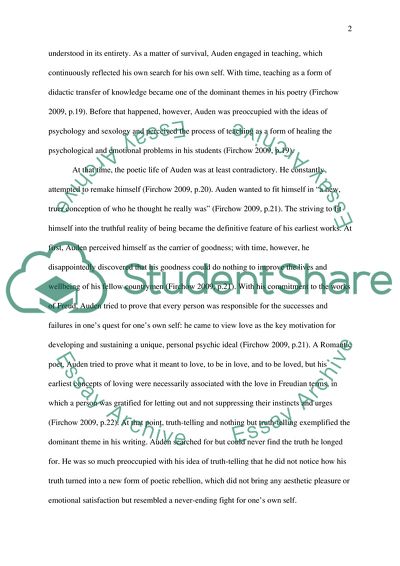Cite this document
(“O Tell Me Truth About Love: The Relationship between Truth-Telling and Essay”, n.d.)
Retrieved from https://studentshare.org/literature/1408184-o-tell-me-truth-about-love-the-relationship-between-truth-telling-and-romantic-lies-in-audens-early-poetry
Retrieved from https://studentshare.org/literature/1408184-o-tell-me-truth-about-love-the-relationship-between-truth-telling-and-romantic-lies-in-audens-early-poetry
(O Tell Me Truth About Love: The Relationship Between Truth-Telling and Essay)
https://studentshare.org/literature/1408184-o-tell-me-truth-about-love-the-relationship-between-truth-telling-and-romantic-lies-in-audens-early-poetry.
https://studentshare.org/literature/1408184-o-tell-me-truth-about-love-the-relationship-between-truth-telling-and-romantic-lies-in-audens-early-poetry.
“O Tell Me Truth About Love: The Relationship Between Truth-Telling and Essay”, n.d. https://studentshare.org/literature/1408184-o-tell-me-truth-about-love-the-relationship-between-truth-telling-and-romantic-lies-in-audens-early-poetry.


